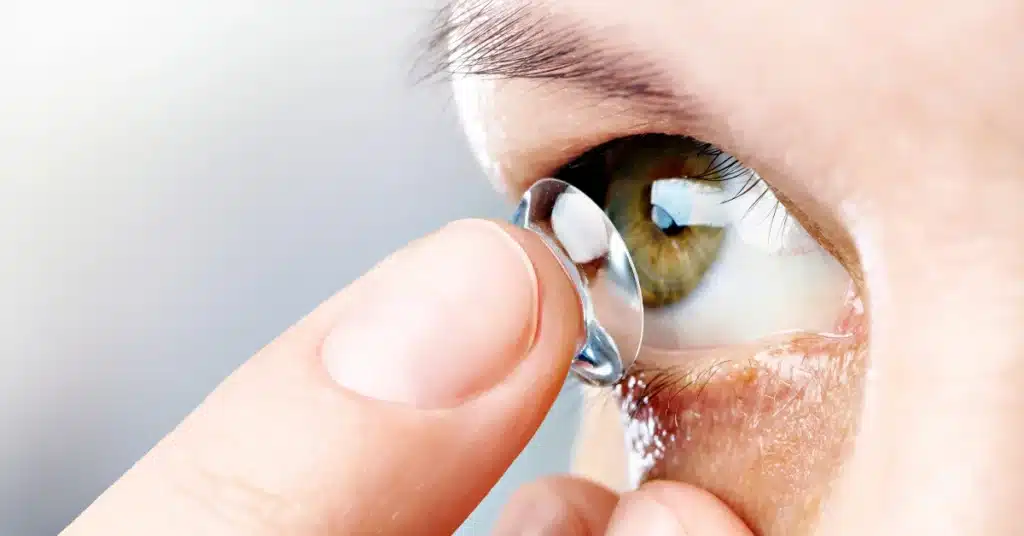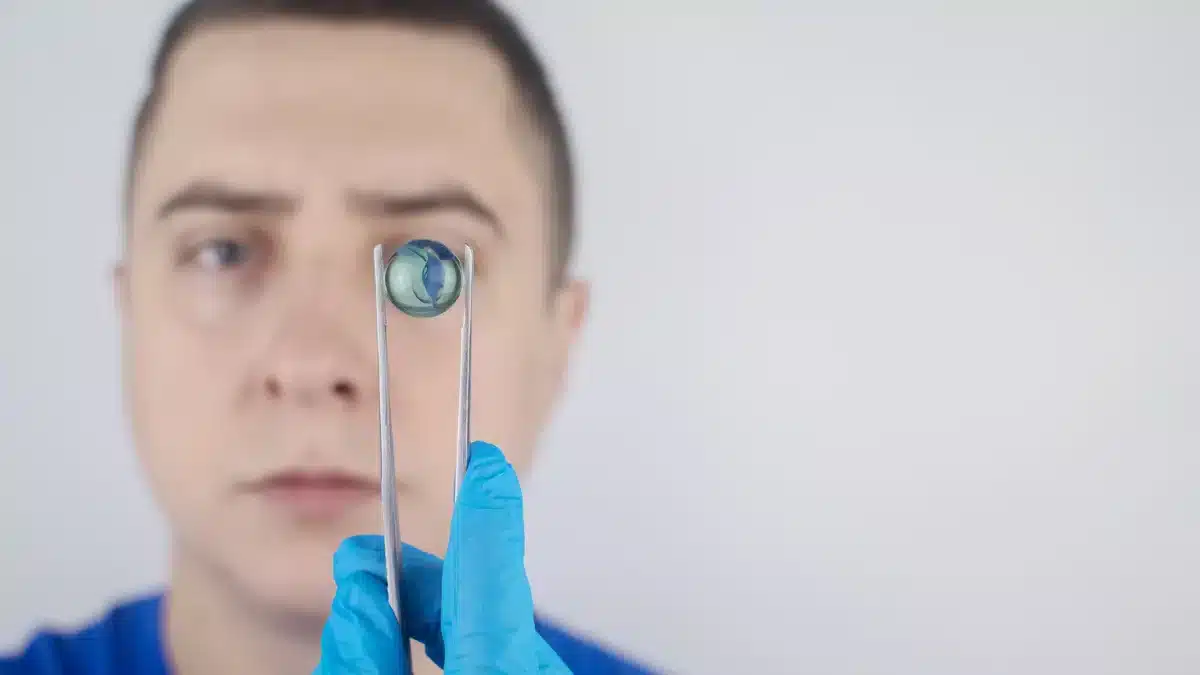Cerulean Cataract is a rare eye condition that causes a unique blue tint on one’s eye lens.
It is often associated with factors such as genetics, indicating a hereditary component.
Individuals with a family history are more likely to experience Cerulean Cataracts.
It affects the nucleus and cortex of the lens and normally does not cause symptoms until late.
This article will focus on the symptoms, causes, and treatments of Cerulean Cataracts.
Understanding Cerulean Cataract
Cerulean Cataract is characterized by a striking blue discoloration of the eye’s crystalline lens.
Unlike other types of Cataracts related to aging, this condition is linked to genetic factors.
Individuals with a family history of Cerulean Cataracts are at a higher risk.
Regular eye checkups are essential for early diagnosis and proper management of the condition.
Understanding the various aspects of Cerulean Cataract is critical since it can impact vision if left untreated or unmonitored.
Do you want to know more about other types of Cataracts? Read “Types of Cataracts” for insights on eye health.
Symptoms of Cerulean Cataract
 Source: razyph_from_Getty_Images
Source: razyph_from_Getty_ImagesThe blue tint in one’s eyes is one of the most prominent symptoms of Cerulean Cataracts.
A person’s visual clarity is reduced due to the tint, which might cause vision problems.
Research suggests that Cerulean Cataract symptoms may initially appear in childhood.
Some individuals can also experience symptoms such as sensitivity to glare due to Cerulean Cataract.
The blue tint of the crystalline lens in Cerulean Cataract can lead to blurred vision, affecting the clarity of vision.
Some individuals may find it difficult to differentiate between colors due to Cerulean Cataracts.
If the symptoms are not treated, they can worsen and damage one’s vision.
Cerulean Cataract causes
With its unique blue tint, Cerulean Cataract is a rare eye condition often linked to genetic factors.
Research states that it is a genetically inherited disorder often caused by a mutation in certain genes.
This makes it critical to correctly detect genetic changes to determine the optimal treatment for the condition.
It is a rare form of Congenital Cataract and shares similar causes and risk factors.
According to studies, radiation exposure can cause the development of Cataracts.
UV rays are the main cause for this condition in most cases.
Medical conditions such as Diabetes and certain lifestyle factors like smoking can also lead to Cerulean Cataract in some individuals.
Have you ever wondered what leads to Cataracts? Read “What Causes Cataracts” to understand more about this common eye condition.
Cerulean Cataract treatment
 Source: Getty_images
Source: Getty_imagesCerulean Cataracts can be effectively managed depending on the severity of your condition.
Doctors may recommend eyeglasses or contact lenses for improving eyesight in the early stages of Cerulean Cataract.
As the condition progresses, Cataract surgery aims to replace the cloudy natural lens with an artificial, synthetic lens for improved vision.
For effective management, early diagnosis is critical. For personalized advice, speak with an eye care specialist.
Regular checkups ensure timely intervention, optimizing the potential for clear and healthy vision.
Summing up
Cerulean Cataract is a rare genetic eye condition marked by a distinctive blue discoloration of the eye’s crystalline lens.
Sensitivity to glare and difficulty in differentiating between colors are some of the symptoms of Cerulean Cataracts.
Although genetics is the primary cause of Cerulean Cataracts, it is also caused by UV radiation, Diabetes, and smoking.
Doctors usually prescribe glasses or contact lenses in the initial stages of Cerulean Cataract.
In some cases, Cataract surgery is performed when the condition gets worse.
If you are experiencing signs of Cerulean Cataract, it is essential to consult your doctor.
Frequently Asked Questions
What causes Cerulean Cataracts?
Cerulean Cataract, a rare cataract, is typically caused by the crystalline lens acquiring blue discoloration due to copper deposits.
This unique ocular phenomenon is often associated with genetic factors, and its onset is relatively infrequent.
Does Cerulean Cataract change color perception?
Yes, Cerulean Cataracts can alter color perception. When a person has this condition, the blue tint in their lens distorts the colors.
It makes it difficult for the affected individual to distinguish between different colors.
Can Cerulean Cataract be diagnosed in children?
Cerulean Cataracts can be diagnosed in children. It is genetic, and symptoms can appear as early as childhood.
During pediatric eye examinations, doctors can detect the blue tint and other symptoms, allowing for an early identification of the condition.
Can Cerulean cataracts cause blindness?
If left untreated, severe cases may lead to significant vision impairment.
Timely intervention, such as cataract surgery, can prevent potential complications.
How does the blue tint during Cerulean Cataract affect one’s vision?
Cerulean Cataract’s blue tint can impair vision severely.
It lowers their visual acuity, affects their color perception, and makes them more sensitive to glare.
This color makes it difficult to distinguish details and causes contrast sensitivity, affecting one’s vision.
When referencing outside resources, GoodrxMedicine always provides full citations. To learn more about the measures we use to maintain the quality of our content, please review our Content Information Policy.











